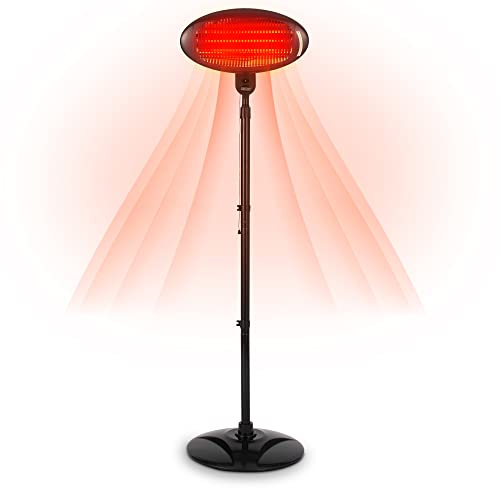How to Choose a Patio Heat Lamp Electric
There are a variety of options when you want to heat your patio. Electric heaters are much more convenient than propane models, which require fuel refills. They can be heated in a matter of minutes by pressing a button or flipping a switch.
They also don't release gasses that might be harmful to health. Some offer adjustable heat settings for varying distances.
Type of Heater
With the right patio heater, you will be able to comfortably relax in your outdoor living spaces well into the night and across the seasons. Patio heaters are available in a variety of varieties that include freestanding propane or natural gas models, as well as ceiling or wall mounted electric radiant heaters. Your choice is contingent on the size of your area, the current power sources, and your personal preference.
The majority of patio heaters use electricity, natural or liquid gas to generate heat. They emit heat via a combination convection heating and radiant heating. The heat output is measured in watts, and can be converted to British thermal units (BTUs) for comparison. Some models have adjustable heat settings to give you more flexibility.
Patio heat lamps combine the use of a burner that is mounted on a pole with a perforated screen that reflects flames and sends heat downwards to warm objects, people and furniture. Some outdoor heat lamps have reflective reflectors over the burner, which can be silvered to decrease the amount of heat is lost upwards.
Gas patio heaters are among the most commonly used patio heaters. They are able to heat multiple tables quickly and evenly. These patio heaters can be portable and run from a propane tank or plumbed into your natural gas line, with the latter providing more convenience and lower installation costs, but also needing ongoing costs for fuel.
A increasing number of homes are equipped with natural gas lines, which makes them the ideal option for those who prefer gas-powered patio heaters. They're simple to install, but require a dedicated and properly functioning gas line to function safely. There are portable natural gas heaters that come with extension hoses that assist in overcoming this limitation however they could create a tripping hazard and a fire risk when not in use.
Safety

Electric patio heaters are safe to use in covered areas, as they permit heat to radiate upwards and not outward. However, they're not meant to be used under an open roof; the heater should be placed at least 18" from adjacent walls or 6" from the ceiling to prevent fire hazards.
patio heater electric free standing made of propane and gas can only be installed in enclosed areas with durable covers made for outdoor use. These covers are typically made from fire-resistant canvas and have the option of having a roof that is closed. The safety concerns associated with these types of outdoor patio heaters are due to the flame and fumes they produce. They should be kept away from flammable objects, such as curtains and chairs.
When installing an electric patio heat lamp or any other patio heater, be sure to follow the manufacturer's directions and safety precautions carefully. Make sure you select a system with UL and CSA certifications, and read the owner's guide thoroughly. Be sure that the heater is out of reach of children and pets. Some free-standing patio heaters, such as EUROM, come with a built-in tipping safety that automatically shuts off the device in the event that it falls over.
If your patio heater is connected to a natural gas line, you must examine it regularly and be sure to have it tested by a certified professional for leaks. If the line needs to be replaced, make certain to get an authorized plumber. A professional will be able to determine if the line is properly routed or should be routed through an underground pipe. In addition, a professional can make sure the heater in the patio is plugged into an outlet that's GFCI (ground fault circuit interrupter) rated to protect against electrical fires and shocks.
Installation
The height at which a patio heater is positioned determines the amount of heat it will radiate into the area. The heater should be positioned away from any surfaces such as plastic and wood that could deform. Depending on the heater model, you can choose to mount it on a wall or structure using standard mounting brackets. Certain models come with soft starters, which reduces the peak current to safeguard your circuits.
